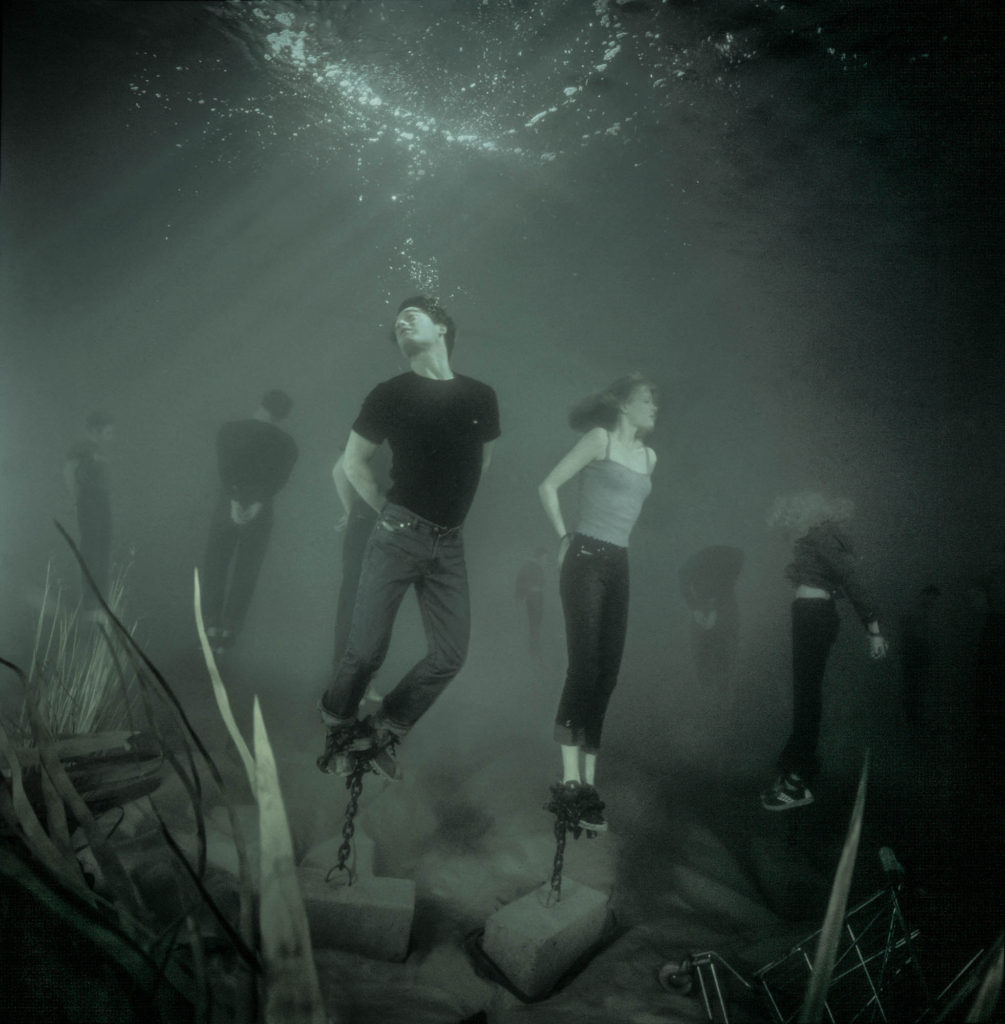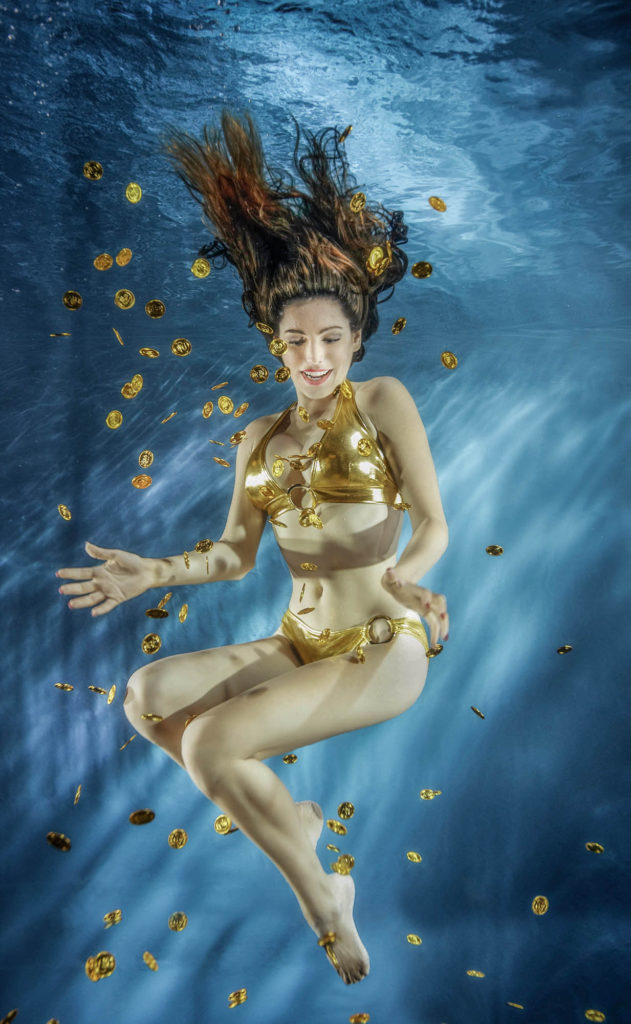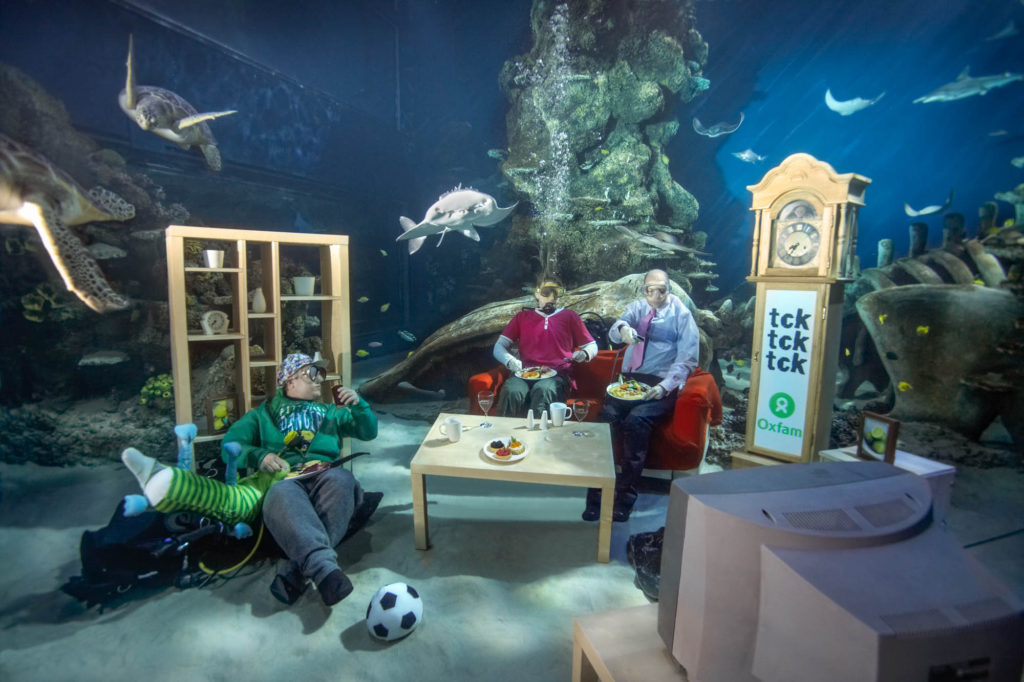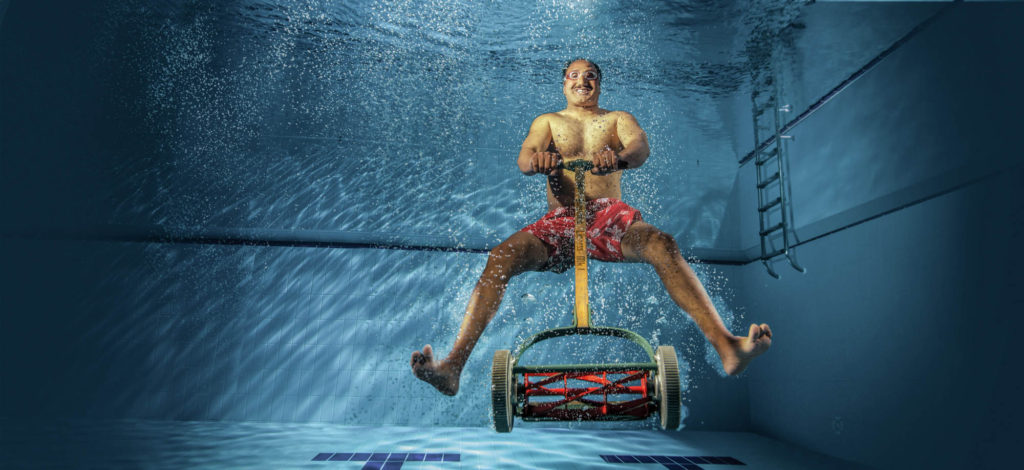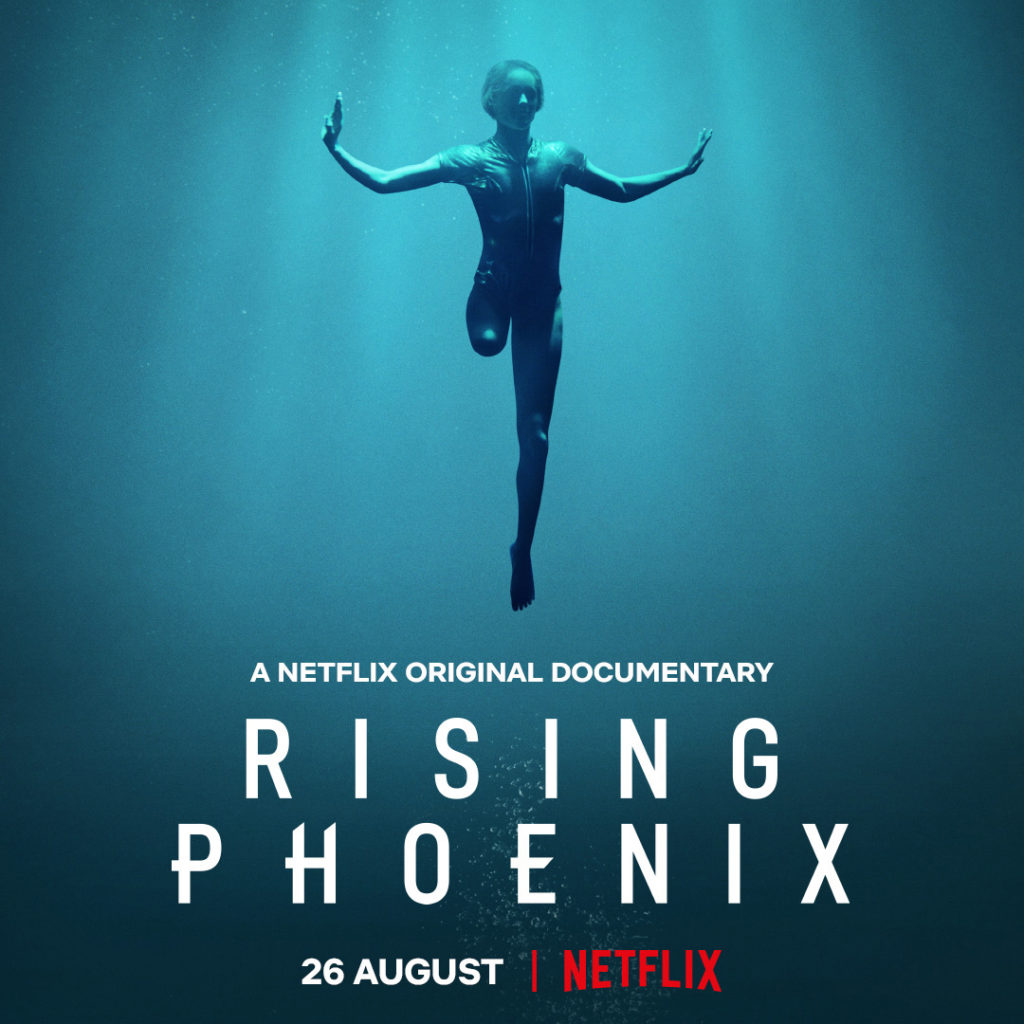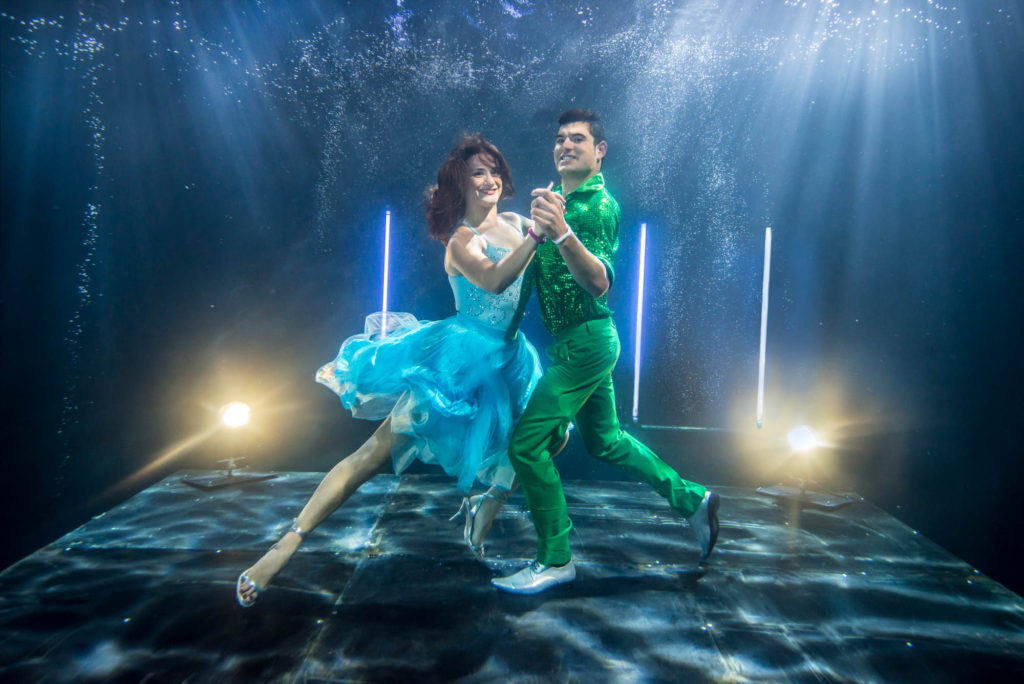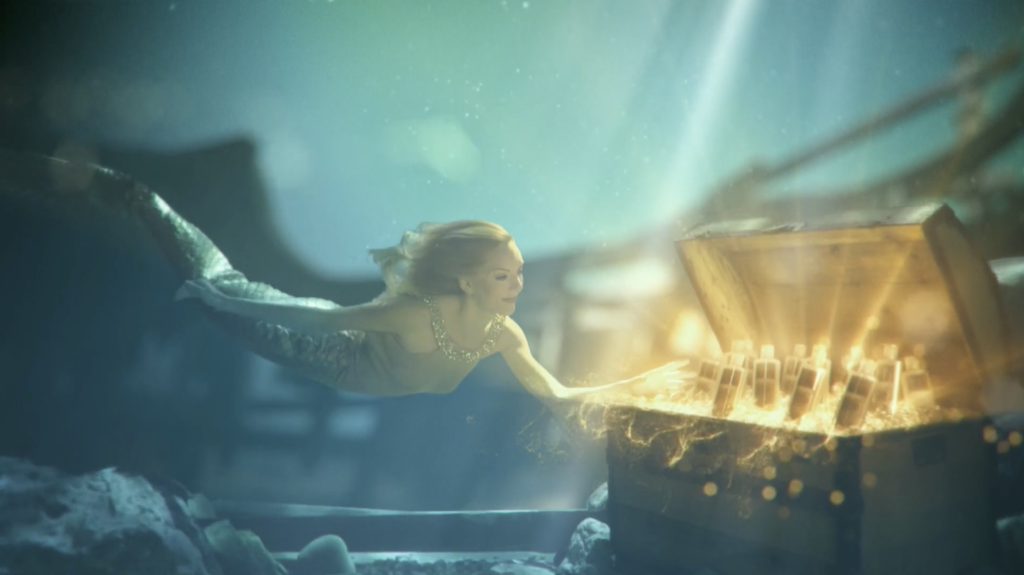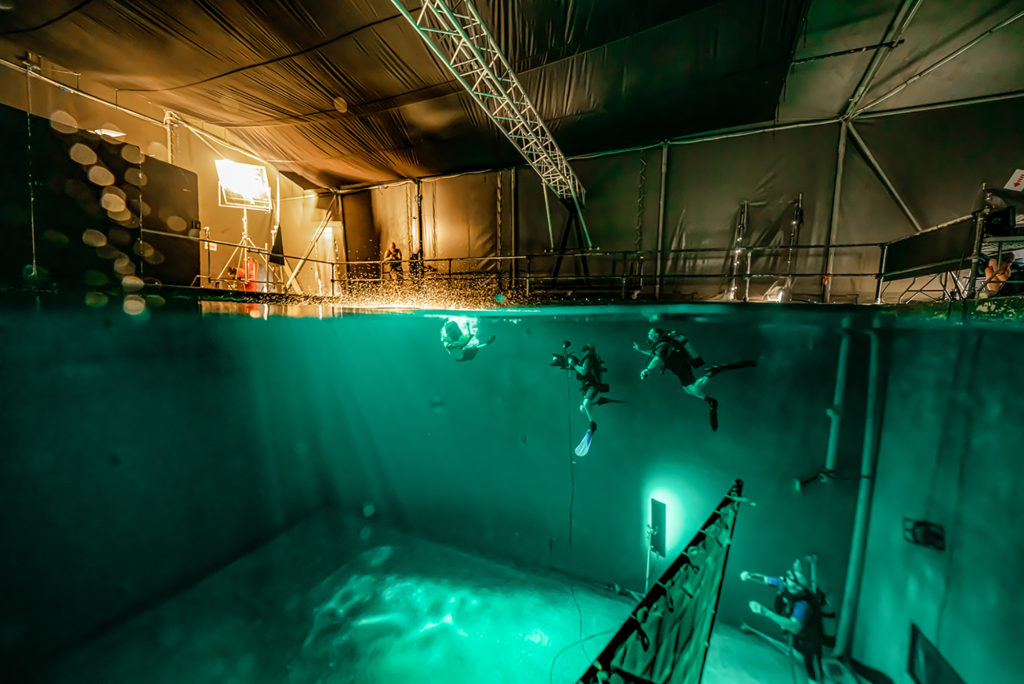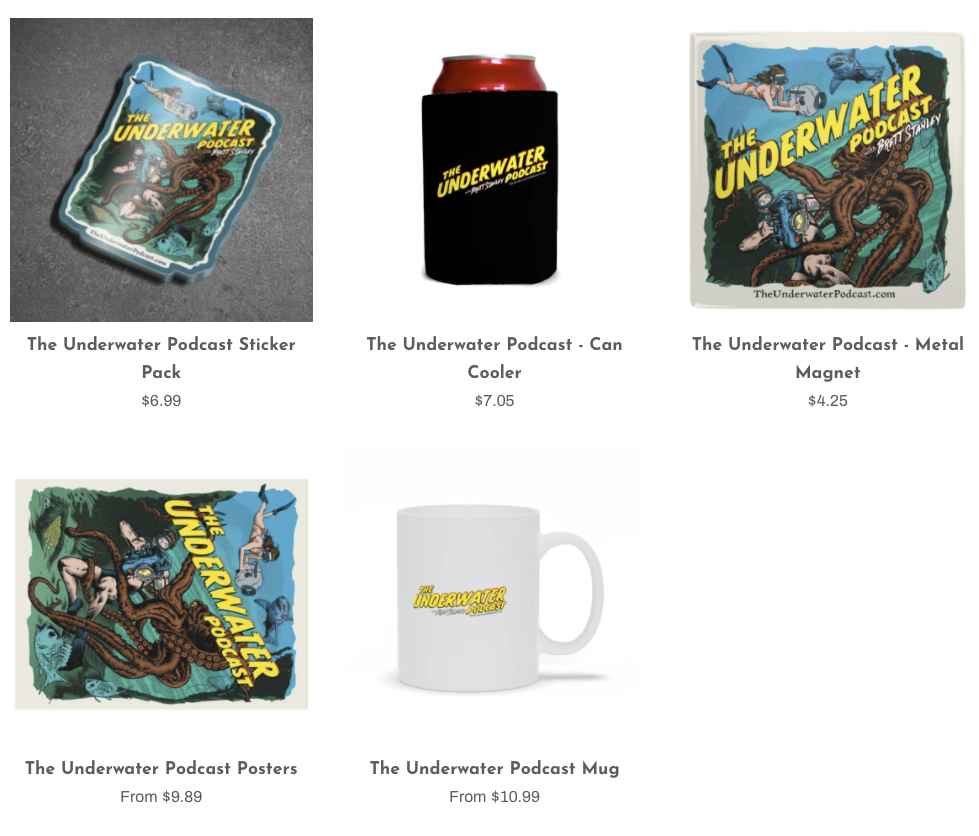Director of Photography Zac Macaulay
In episode #39, host Brett Stanley chats with underwater director of photography Zac Macaulay.
Zac’s career has taken him from assisting in his younger days to a sort after stills photographer shooting underwater commercials for large brands, and now a cinematographer working out of his base in Brighton, England.
They chat about his start in the industry, what kind of work he enjoys the most, and how different it is shooting stills as opposed to motion.
Follow this guest: Website, Instagram
Discuss the episode in our facebook group.
About Zac Macaulay – Underwater Director of Photography
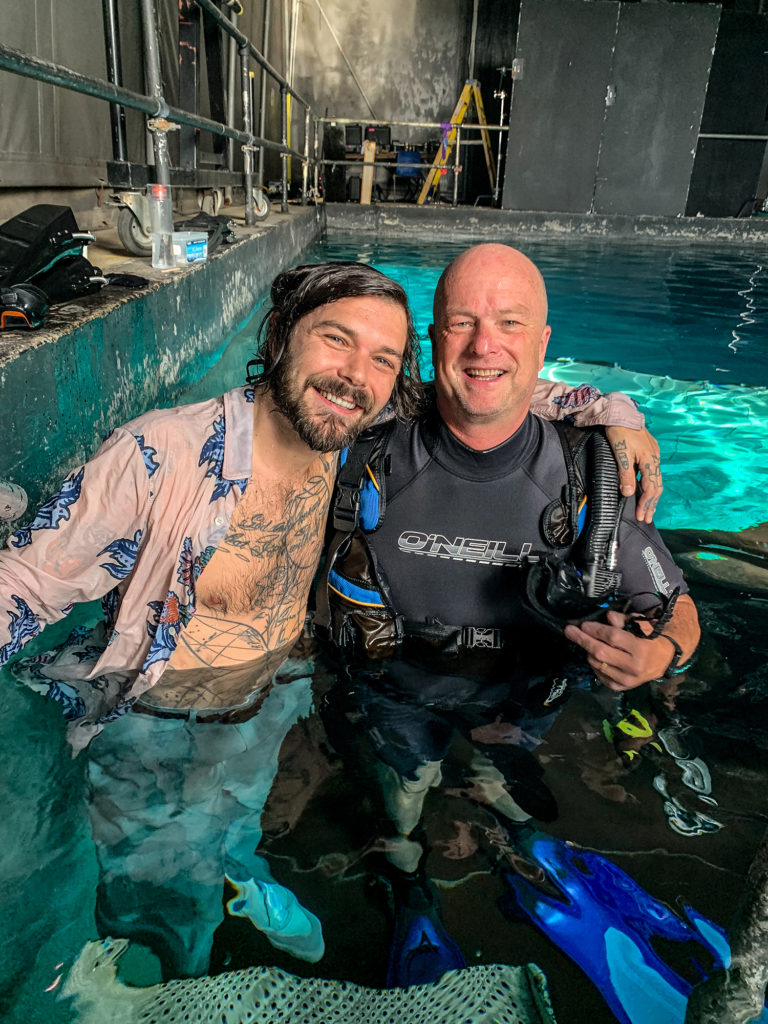
Zac has worked with some of the best people in the business, including specialist studios, riggers and lighting gaffers (amongst other professions), in a career as an underwater cameraman and photographer that has taken him and his crew all over the world. He has shot for a wide variety production companies and agencies both advertising and editorial for many and varied clients. Zac likes to use a strong graphic element in his shooting style, using colour and composition as a thread that runs through his work.
Podcast Transcript
Ep 39 – Zac Macaulay
Brett Stanley: [00:00:00] Welcome back to the underwater podcast. And this week I’m chatting with underwater director of photography, Zac Macaulay. Zach’s career has taken him from assisting in his younger days to a sought after stills photographer, shooting underwater commercials for large brands, and now a cinematographer working out of his base in Brighton, England.
We chat about his start in the industry, what kind of work he enjoys the most and how different it is shooting stills, as opposed to motion. Okay let’s dive in
Zach welcome to the underwater podcast.
Zac Macaulay: [00:00:31] Thank you. Thank you, Brett.
Brett Stanley: [00:00:33] How is it there? You’re in Brighton, right? Which is South of London.
Zac Macaulay: [00:00:36] Yes. Yes. It’s been unseasonably warm. The weather has been fantastic and beautiful. It’s just been really uplifting of such a, a, a Torrid time. But I’ve just listened to the weather forecast and therefore costing snow on Monday. So. So you don’t know where you are, but we’ve enjoyed it while it lasts.
Brett Stanley: [00:00:53] Yeah, nice. I mean, I’ve been to Brighton quite a few times and it’s so beautiful. It’s it must be in, in an amazing place when that sun’s shining.
Zac Macaulay: [00:01:01] Bright Brighton is I think UK is most interesting town. And we moved there 10 years ago. My wife and three kids will now. Young adults. And we haven’t regretted it for a moment that it’s full of restaurants, pubs, clubs, bars shops, a lot of independence, far more percentage-wise than anywhere else in the UK.
So, you know, you, haven’t got the, you know, these huge chains, which makes it much more interesting. You’ve got the lanes. And of course, you’ve got the downs behind us, which is an enormous sort of area of natural beauty. And then you’ve got the sea, of course. So, for me, it’s everything and you you’re 50 miles from London.
So, which is important for work. Obviously, if you have to go to see someone about a job or, you know, you want to pop into London is within an hours train drive.
Brett Stanley: [00:01:47] Which is perfect. Cause you’ve got the sort of type of work you’re doing. You, you kind of, you know, you’re between the ocean and, and you’re probably close to the water tanks as well. Like at the studios.
Zac Macaulay: [00:01:58] Yeah, that’s right. Well, you’ve got you’ve got the underwater studio and basil then, which is I would say Northeast London and that’s an hour and 20, and then you’ve got pine use stage. Which is a little bit longer, but, but yeah, that both get all very easily and I’ve got a few friends dotted around who have really nice to import as well.
So think, you know, three meters depends for you know, for tests or even sort of budget jobs.
Brett Stanley: [00:02:26] Oh, that’s so this is good to know because the times that I’ve been in Brighton recently, I’ve been doing underwater photo shoots there. And and I rented a couple of times I’ve rented a backyard swimming pool and knowing that there’s more than one in Brighton is, is very handy.
Zac Macaulay: [00:02:40] Well, I can surely help you next time. You want to come here and we’ll be good to have a plate with you when the pub’s open.
Brett Stanley: [00:02:46] Oh, totally. Yeah, I, yeah. I, I kinda think I left a little bit of my heart in, in Brighton sort of 30 years ago. When I first you did the backpacking thing around the UK and Europe and, yeah, always, always loved going back. So if for you, like, in terms of, of living there, are you shooting a lot in the open water there is, is it, is it a good bit of the ocean to be shooting in for productions?
Zac Macaulay: [00:03:07] No, not at all. You wouldn’t really choose to do that. Um, Yeah, well, there are some open sea jobs productions that, that demand that. But the minute you put your, your dome under the waves, you may, you’re probably more likely than not be able to see very much.
Brett Stanley: [00:03:27] Right.
Zac Macaulay: [00:03:28] Um, You know, it’s not the red sea or anything like that. It’s, you know, it’s quite, there’s a lot of backscatter particular, you know, all kinds of stuff.
It’s a very healthy city, but it’s just not very see-through.
Brett Stanley: [00:03:41] Yeah. So, so if you do work there, it’s mostly surface stuff,
Zac Macaulay: [00:03:45] Most of my work is. Is in tanks now. We shoot, I shoot for TV, drama, movies, that kind of thing. In film tanks or swimming pools. My previous life was shooting wildlife for magazines when I was shooting more stills that involves going, going to nice places which I’m, you know, where you’ve got great visibility.
Brett Stanley: [00:04:08] Yeah. So was that underwater wildlife as well, or, or above Florida?
Zac Macaulay: [00:04:13] Yeah, well, always under underwater. Yeah. I pretty much only ever undone on the woods throughout my entire career. So yeah,
Brett Stanley: [00:04:20] So how did that start? How did you get into the underwater world?
Zac Macaulay: [00:04:23] well I, my father was a Swanage man. Swanage endorsed. It is Britain’s premier dive town. It’s the most gorgeous town. Seaside town next to, and obviously, It’s got some of the most incredible dive you’ve ever been to a lot of war damage, a lot of chips wrecks, they practice for D-Day there.
So you’ve got lots of tanks, line of pool Harver. You’ve got amazing reefs. Of course you haven’t got the, you know, the color and the visibility you’ve got in other parts of the world, but, but, you know, being a, a Brit is pretty much top of the shop. And. After that I, I pretty much decided I wanted to be a photographer.
And someone suggested I go to my hobby was scuba diving and someone suggested I put the two things together. And then like I thought to myself, well, who’s, who’s the best person in the industry working at the time it was a guy called Mike Portelli. So I rang him until he was sick of me, ringing him and gave me the chance.
And the rest is history. Really
Brett Stanley: [00:05:24] So the Pesta, the Pesta worked.
Zac Macaulay: [00:05:27] lovely. Don’t get me wrong. He was the loveliest guy, sadly he’s passed away now, but but yeah, he was, he was fantastic Chapman. Totally. The most innovative, you should check them out. Mike Portelli hit most innovative, incredible guy, right? At the very beginning, the Genesis of underwater filming and photography.
Brett Stanley: [00:05:46] so was he doing like films and stuff like that? Or was it still in the wildlife? Wild?
Zac Macaulay: [00:05:51] Yeah. He did a little bit of wildlife, but that didn’t float his boat. Particularly he, he just wanted to create. Pretty similar stuff to the stuff you’re doing, but you know, he, he, he was doing it on film, just like I did when I started, but, and then he and he, he won several awards pretty quickly.
He was actually a dentist and he, he Didn’t have a huge amount of interest in scuba diving, but he, he, he was an artist and he wanted a, you know, a canvas to apply his particular art. And he quickly, quickly picked up a movie camera. You had a bit of money because he was dentists and dentists, you know do quite well.
And he, I think he just gambled a lot of the cash he had made and I totally admire and. He went for it and he bought, he bought, some, some um, it’s expensive film gear. I mean, it’s so old now. I can’t remember exactly what it was, but it was all film, film gear as it were. And he, you should check his ads.
They are insane. Really, really amazing stuff.
Brett Stanley: [00:06:47] I mean, that’s, that’s really quite inspiring. Isn’t it? When you, when you kind of look back and think, you know how easy we’re going to have it now with digital stuff, and then look at the work people were doing back then with film. It’s it’s it’s motivating.
Zac Macaulay: [00:06:59] Yeah. I mean, my first campaign for. Diesel jeans. He might pull, tell you was actually offered the job. And um, he said, look, it’s gone do it. I’m busy. Do you want to do this? I said yeah, you don’t mind? So I hired um, I hired a Hasselblad and a two 20 back. So that gave me 20 shortbread 20 shots, man.
Brett Stanley: [00:07:23] no pressure.
Zac Macaulay: [00:07:26] Yeah. And the two day shoot, one day builds one day shoot, and I had ’em to see, we didn’t have a DJ in those days. So I bought a, a 35 millimeter Polaroids box. I don’t know if you’re familiar with this. I’ve still got it here. I’m looking at it. It’s not antique piece now. And.
Brett Stanley: [00:07:48] the housing for the, for the for the Polaroid camera.
Zac Macaulay: [00:07:51] No, no. What you do is you, you simply take a conventional 35 millimeter film camera. You load it with the Polaroid film. Which I believe has only 12 shots. I can’t remember now. And then you shoot your 12 shots. And then you take it out. You open up the back of your 35 millimeter housing and process the Polaroid film in this.
Machine and outcomes outcomes a very, very tiny 35 millimeter image. So you’ve got all these advertising executives, some lows looking at a piece, the most tiniest thumbnail, you know, Mia. Okay. I’ll do. Yeah, no go. Go in with your 20 shots or your hassle bladder and shoot it slightly bigger, please.
Brett Stanley: [00:08:41] that’s incredible. So so yeah, let’s talk about that. Cause I’m fascinated. So, so it was it like a little cartridge of, of, of kind of Polaroid film that would go into like your Niko Nikos or something.
Zac Macaulay: [00:08:53] Yeah, exactly, exactly. That exactly. That, yeah. It’s like like a cassette of very similar to roll a roll film and you would just put it in a normal way. And just, I think the, also the other downside was it was about money. It was about 50 ISO or less.
Brett Stanley: [00:09:08] right. Yeah. So you had to pump the light into it.
Zac Macaulay: [00:09:12] Yeah. Well, I had to do a lot of, you know, let’s do a lot of imagining, shall we say.
Brett Stanley: [00:09:16] Right. So how does that, how does that translate? So, so. For anyone who’s listening like a D D back in the day, when you shot with film, you would shoot with a Polaroid to kind of get an idea of what the scene and the lighting looked like, because you, you know, you couldn’t process your film there. And then, so you’re doing that underwater with this nifty little Polaroid thing, but if it’s ISO 50, does that mean that you have to shoot the campaign on ISO 55?
Zac Macaulay: [00:09:43] No, not this tool. I mean, you just do the maths really. So, you know, you put in if you, you may well decide to choose a hundred or 200 film. I’ll have to add the caveat that I only use this device once. Um, But yeah, so you just do the math, so you double it, or if you make $400, so if you decide, but of course, you know, you have to be careful of grain and so on.
So I think I doubled it to a hundred but this was a high budget job. And they, we had, I think we had a 20 K with a generator pumping down through two and a half meters, three meters of water. So it goes quite a lot light.
Brett Stanley: [00:10:21] Yeah. I mean, yeah, 20 K that’s that’s that’s a lot of, yeah, a lot of light coming in. And so how did it, how did it come out with your 20 pieces of film?
Zac Macaulay: [00:10:29] Well, you can see it on the website. It’s it was interesting. Most interesting job happened to be, I would think one of those jobs in my career, I happened to be the very first one. It was a mafia hit dead and dying people tied to concrete blocks in various stages of the decomposition. From the very, at the very F from you’ve got someone who is minutes away from dying next to him, there is a lady who’s obviously just expired.
And then off into the distance, you’ve got poor souls who, perhaps dead a couple of hours or whatever.
Brett Stanley: [00:11:06] And, and this is all in camera. So.
Zac Macaulay: [00:11:08] Yeah, absolutely. All in camera. We. Yeah, yeah, I know I got, I got it. It was quiet. It had to be quiet. It was all done under health and safety HSE regulations. But I got it pretty much within, within 30 minutes, you haven’t got long to do this stuff. You know, the, most of the, it was about a month in planning and getting all the, the, the mannequins because you all, the you’ve only got two live people.
Struggling
Brett Stanley: [00:11:36] that was my next question. Yeah.
Zac Macaulay: [00:11:38] to, to, if you, if you look at, if you look at the image, there’s two human beings in the foreground. There’s a man and a woman and there they are actually live and they’ve got their hands tied behind their back. Only. They haven’t, they’ve got a cylinder of spare air. Which is a safety device.
We had um, safety divers left and right. So the actors, when they require they, all they have to do is put their hand out. So if you don’t have a, would, would be feeding them air within one or two seconds. So it was all completely safe. But then going up, back into distance, these mannequins, which the agency dressed in diesel gear, and they’ve made, made the figures more grotesque and more decomposed as they went back in as they went back into the scene. And we had to have a, we got to a child’s bike in there and a shopping trolley usual things you find in nasty places where mafia, people want to dump bodies.
Brett Stanley: [00:12:33] Yeah. I mean, it’s, it’s an amazing effect like I did until you sort of mentioned it. I was like, wow, you had like what, like 12 talent on this holding their breath. Like, that’s pretty awesome. But knowing that they’re now mannequins it’s, it’s quite impressive.
Zac Macaulay: [00:12:47] You wouldn’t be able to do that. It would be totally impossible. I think, you know you’d have issues. Yeah. They have issues with, we know with the legal framework of which, how the ship was set up, but, but I think two worked well.
Brett Stanley: [00:12:59] Oh, so where was this shot? Was this actually shot in open water? Is this in a tank?
Zac Macaulay: [00:13:02] no, no, no, no, not at all. No, this was in a tank. I wouldn’t choose to shoot an open water. I’ve only done. I think one major job in this, in the open water in Oakland ward in my career, you just need control.
Brett Stanley: [00:13:17] Yeah. So with a shot like this, when you’re trying to replicate, you know, like a a, a murky swamp or whatever, Do you sort of Merck up the water, you’ve adding particular to the water to give you that depth?
Zac Macaulay: [00:13:29] Yes. Well, that is another story, you know? We had to, yeah, but generally speaking, yes, you do. You may, in this case you would certainly, it would be desirable to do that. Yeah. So you, in this case, we added a bit of Fuller’s earth. Now you can add things like small florets of broccoli. That’s a favorite.
Um,
Brett Stanley: [00:13:50] Does it, what does that day.
Zac Macaulay: [00:13:51] it just looks it’s perfect for just looking like bits of vegetation floating by.
Brett Stanley: [00:13:57] okay.
Zac Macaulay: [00:13:58] Yeah, yeah, yeah. Yeah, a couple of years later, just, just a funny story about this. We, I took the dead and dying dummies home, let them drain in the garden for a couple of weeks. And then one day I put them into the loft.
And then we moved house and I took them to a dump. I had these four or five. Characters who grotesquely. And either as you pop them through the aperture where they recycle the local recycled council tip, I think someone called the police. Um, But um, I never heard any more, but it was a lot of people looking by the shops.
Brett Stanley: [00:14:40] You could have a lot of fun with that a bit and get yourself into some serious trouble probably too.
Zac Macaulay: [00:14:45] Yeah.
Brett Stanley: [00:14:46] That’s awesome. So, so how does that work in terms of your relationship with Mike in, we used a working for him at this stage, or had you gone off on your own at this point and, and he was kind of starting to to sort of pass work on your way if he couldn’t do it.
Zac Macaulay: [00:15:01] Both really. I mean, we all work kind of work and worked on a freelance basis. So. He would, he would ring you and say, look, I’ve got a job. Can you make it? And I would be part of uh, his team or. And, you know, if, if there was enough work to go around for certain, if it was a big job he’d made, let us for argument’s sake, need eight or 10 people, but it’s a small job, you know, you may need four or four or something.
So it depends how big the job was and the demands of all that kind of thing. Yeah. He, I was, I was quite young in those days, you know, I think without a lot of experience. So this was an enormous shot in the arm at that time.
Brett Stanley: [00:15:42] That start to open doors for you. Was that like an inroads with the agencies to get more
Zac Macaulay: [00:15:47] It was, it, was it changed? It was a game changer for me. Yeah. There might be things that, I mean, I literally hadn’t done anything up until that time. I’d done a few, you know, bits and pieces and I’ve been on, on how to learn, how to shoot on the water four or five times abroad with With various uh, groups, but I hadn’t really done anything when the advertising world and, and funnily enough, the advertising lady looked at a picture of a fish and said, yeah, you can, you’ll do well.
You know, you have to, you have to kind of have that bit of luck, don’t you. And then you’re off and running.
Brett Stanley: [00:16:24] absolutely. So what did that link to? What was the next sort of jobs that you did?
Zac Macaulay: [00:16:28] Oh God, I’m just, I’m looking at my site now is quite a lot of different things. I mean, I went to job the Sony um, British heart foundation. I’ve done two campaigns for them. Various pharmaceutical companies Kelly Brook for the national lottery. Who’s an actress, I think, you know, she’s British, I I’ve done jobs for Oxfam for boots, the chemist for Merlin entertainments.
They’re all they’re sea life centers. That was fun. I got to, it was like proper diving only, you know, in, in their tanks. London aquarium might get a job for Guinness underwrite. We it was that was, that was interesting. I think my, my favorite job of all of these I’ve just mentioned was the British heart foundation.
I call it lawn mower, man. That was a, an interesting, I got, I went there to do, to answer a totally different brief. And when they knew I could shoot on the water originally, they just want to be, to shoot a couple kissing on beach dry. And they said, Oh, you can you do on the water’s fine. And the advertising agency, pers people went into a huddle in the corner, drew something.
And out came this guy holding a, mowing a lawn on daughter. I said, can you do that? I said, yeah, of course, can that job was that won several awards thing. Yeah. But so it just goes to show how the nature of creativity can just be spur of the moment often.
Brett Stanley: [00:17:53] Yeah, totally. And I, I definitely think that in, in sort of our genre in our industry, that happens a lot because I don’t think people really. If they haven’t done it before, they’re not sure what’s possible. And I think they either go either too far and you’re like, well, actually we kind of, we kind of can’t do that very easily.
Or they’re, they’re really, you know, under estimating what’s what’s possible. Are you finding that when you’re getting involved in these sort of productions that you’re giving them ideas that you’re kind of sparing their imaginations to kind of do something that’s a bit bigger and better than they had maybe thought of to start with?
Zac Macaulay: [00:18:27] Yeah. Sometimes, sometimes, sometimes not. You know, you have to, you know, scenarios where they are very definite what. They want, they know what they want. And they, you know, you’re there to serve that purpose, which is fine. You can offer as many tips and solutions as you like, and the ideas, and they’re often taken on board other times, you know, you’re are staying and most, as you may know, as you will know, most campaigns are devised and they have to be passed, donate by the client signed off. So you’ve already got this, this, this very core idea, which has to be replicated. So you, you, the amount that you can add is limited, unless you just shoot anything like, which I don’t think it’s ever happened, but generally speaking there is, you know, there is, I didn’t actually, I did a job for um, Fitbit.
As you can see on the site, which, which was very, very much a bit more loose and it turned out extremely well. I thought where they work, there’s a program on UK television called strictly come dancing, which is really popular. And they wanted to mix the genre of strictly come dancing and of people wearing Fitbit watches, you know, those.
Devices that monitor your health. So we got a couple of very fit ballroom dancers who worked for an amazing agency called acrobatics, who worked through, could hold their breath for two to three minutes at a time. And we built this, a very simple dance floor under water and put some simple lighting in and these, and I just said, let’s just go down there and just dance your heart out.
And that’s what they did. But whenever you do put your wrist with a roof, with a Fitbit as far forward as you can.
Brett Stanley: [00:20:14] Yeah. Push the product in. Yep.
Zac Macaulay: [00:20:17] And that works. I worked very closely with the lighting graphical Neil Blackman. And he, I said to him, I just want it to look, you know, really razzmatazz, lots of, lots of spots going left and right. And crisscrossing. And, and, and that was, that was incredible. And he did that.
So, yeah, it, it often, it goes very much hand in hand with the lighting gaffer,
Brett Stanley: [00:20:37] And I think this, this campaign, or at least when you posted it on your, on, maybe on your Instagram was the one that kind of, I think piqued my interest and went, Oh, what’s this guy doing? Just because of the style of the lighting and stuff. And you’ve got these, are they a stare at tubes in the back there?
Zac Macaulay: [00:20:52] Yeah, actually I just remembered it was Geico. The thing Bernie Prentice was in charge and Neil was working with him on the day. So I don’t, I don’t want to do buddy avid out of ’em. Yeah. So they were here. That was his idea. So he had a couple of what they called uh,
Brett Stanley: [00:21:07] keynote.
Zac Macaulay: [00:21:08] yes. Thank you. Kina flows.
So we, we just put what is very simple but it was very low budget.
Brett Stanley: [00:21:14] But very effective, like the, the, the dance floor kind of area. And then you’ve got the blacked out pool behind and the way you’ve lived it,
Zac Macaulay: [00:21:22] I read, I did a lot of retouching on that myself actually. But only cleaning up the floor and maybe adding an extra beam of light, those two tungsten sources that you can see facing the lens, or I think they’re red States underwater red heads.
So their temps in light source mixed with daylight, light source and expose for you know, 5,600 Kelvin, which is daylight.
So, you know, those tungsten sources gave a nice, warm feel,
Brett Stanley: [00:21:49] Yeah, it’s got a very much, a very kind of nightclub kind of stage kind of feel. And then the bubbles that are in the background, are they intentional or have you just got a safety hanging out in the back there?
It seems, I mean, it looks like maybe you could a bubble bar or something.
Zac Macaulay: [00:22:00] Absolutely. You got it. Bubble line. Exactly. A bubble line. So we, we often use a bubble line. It’s just want to add a little bit of extra detail that it extra shape.
Brett Stanley: [00:22:10] Yeah. So when you’re using a bubble line or a bubble bar, are you, how do you find them? Because what, the times that I’ve used them you kind of have to use them very sparingly. Otherwise they start to do horrible things to the water.
Zac Macaulay: [00:22:23] Yeah, I think the key is you might, I don’t know. You might be alluding to the size of the tank. I mean, If you were to use a smaller tank, you would, you know, the water might become Milky quite quickly. I don’t possibly, but this, this is one of the tanks that I shoot in a lot, which called the underwater studio in Boston.
And they are, it’s an enormous tank 30 feet by 40 feet by six meters deep. So it’s an enormous amount of water in there. So total bubble line, you know, we wouldn’t. It wouldn’t cloud the water all day, even if you had it rolling all day.
Brett Stanley: [00:23:02] Oh, that’s good. Yeah. Yeah. I think the times that I’ve done it, it’s in it. It’s been definitely in a smaller tank and you kind of get this roiling bubbling water effect and uh, yeah, you definitely don’t want it on all day.
Zac Macaulay: [00:23:13] No, no, not so, I mean, it does go through, just go through the air as well. I mean, depending on if you have an umbilical or we often will have several safety divers. Who that there has to be one dedicated to each AXA talent, if you like, and then we’ll have maybe one, or maybe even two other divers rigging helping activate in a bubble lines, moving lights about, you know, there could be in this typical shot here, obviously myself.
The two talent, you’ve got two safety divers. So that’s a two, four, it could be sort of six, seven, maybe even eight people in the water.
Brett Stanley: [00:23:54] Including yourself.
Zac Macaulay: [00:23:55] Yeah.
Brett Stanley: [00:23:56] Yeah. so you’ve got two tanks there in the UK, the Pinewood and, and this one, do you have a favorite between them or do you, do you, do they have different characteristics that you kind of like.
Zac Macaulay: [00:24:06] Well, they’re both different in various ways. One, one is in Pinewood studios, so it’s super famous and it’s, you know, it’s used for. Major, major films, you know, like James Bond and all the rest of it. And obviously it costs a bit more money to, to hire it. The other one shooter and buzzard also has.
Big films sometimes quite major as well. But it, it is a little bit, you know, a little bit less, but they both offer pretty much the same thing. And I love shooting in both. I have to be, if I’m honest I’ve shot in the Underwood studio a lot more. It often is dictated as to what the client’s budget is.
So you will get the scenario where they, you know, they will compare the two studios perhaps. And if their budget stretches, you know, then they will make a decision
Brett Stanley: [00:24:59] correct. Yeah.
Zac Macaulay: [00:25:01] that way or, or the other way. And but they both offer pretty much the same thing, which is an enormous body of very clean water wide gantries, which is important.
So you can. Put your lights pretty much 360 degrees all the way round overhead ladder beam on wheels, which is really important. So you can add lighting directly, overhead, wherever you like. But yeah, they, you know, they have green rooms, changing rooms, showers, they have canteens, you know, it’s a proper place where a big production could just rock up, take over for the day and, and get what they want.
Brett Stanley: [00:25:40] Yeah. And be comfortable
Zac Macaulay: [00:25:41] But yeah, exactly. They both, yeah. They both offer slightly different services for both. Excellent.
Brett Stanley: [00:25:47] And speaking of green rooms, and I know this is not the green room that you’re referring to, but have you done much underwater green-screen visual effects kind of work?
Zac Macaulay: [00:25:55] Yes or some some for sure. There’s the really interesting job I did call, for the Goodmans food group, which is on the ads page. And it was for a company called smack deli. It’s a brand of food, which serves up high class burgers and lobster, lobster burgers. Very delicious. And we had we had two young ladies dancing all day long.
In front of a green screen. And then I managed to persuade the advertising agency to use one of my stills from about 10 years before I was shot in the red sea with some cave light, and some sunlight, you know, pinging past a Rocky outcrop. And that it just looked gorgeous and they put the pinned lobster tails on the bottom half of both of the ladies.
Brett Stanley: [00:26:45] Oh, so like they were actually swimming in lobster tails or it’s in post.
Zac Macaulay: [00:26:49] Yeah, no, that, that was added later. Yeah, no, definitely. Yeah, it was meant to look like an illustration as well. It,
Brett Stanley: [00:26:56] Gotcha.
Zac Macaulay: [00:26:57] it, it wasn’t supposed to be perfect because who the hell has a lobster tail? Right. So,
Brett Stanley: [00:27:02] Yeah.
Zac Macaulay: [00:27:03] so it had to be, had to be like that. It had the idea was it was conceptual.
Brett Stanley: [00:27:09] Yeah.
Zac Macaulay: [00:27:09] More than anything else, but that I, I enjoyed that.
That was a, that was a lovely, lovely one to work on
Brett Stanley: [00:27:15] How do you find working with the green screen? Is, is it, does it take a lot to kind of dial it in to get the right effect?
Zac Macaulay: [00:27:21] no tool. I mean, you, you have to, the biggest, one of the biggest issues is getting one big enough. That’s that stretches the full 40 foot by six meters. And then you have to keep, well, keep it really taught. And then keep it lit evenly even as you can. And that involves budget. So yeah, you, you have to, you have to persuade the client to pay for that.
If that’s what they want. That’s, it’s as simple as that really.
Brett Stanley: [00:27:49] And so what’s your convincing argument for, for, for them paying for that? Is it that they’re going to have, they’re going to save money by being able to do whatever they want in post, rather than trying to spend days trying to get the, the image right.
Zac Macaulay: [00:28:01] Well, yeah, I mean, I guess you, you know, it’s all down to what they want, what the creative vision of the the creative who’s dreamed up this, you know, the idea. And then if they really want to fulfill their creative vision and they really want to go on the water. They may come to someone like me and I will say, well, in my opinion, this is the only way to achieve what you want to do.
And, and then there’ll be, there’ll be a supermarket cart of prices. So if you meet, if you want to add the green screen, it’ll cost an extra such and such. If you want to, you know, add an even light spread from left to right top to bottom, it’ll probably be an extra amount. Sometimes they just don’t have the budget and corners are cut and you can make allowances for some corners being cut as you know.
But in digital it’s easier, but there are limits to the corners that can be cut. And after a bit, you, you have to kind of inform them that perhaps they may want to think about going down another route.
That’s more budget orientated. Shall we say.
Brett Stanley: [00:29:09] totally. And so what percentage of your work is stills versus motion? Cause I know you do both. Did you start off with stills and then move into motion? Or were you always doing both
Zac Macaulay: [00:29:20] Yeah. The first one. Exactly. So yeah, pretty much only stills for 20 odd years and that stills. In the UK anyway, I don’t know, but it’s like in state, but it’s become harder and harder to, to make a living out of at the sort of high-end level. So. And, and perhaps there was an element of me wanting to find a new challenge.
And so I bit the bullet and bought myself a really nice system Gates, deep weapon housing with a red, Epic dragon and a couple of lenses and all the, the chutney that goes with it. And it was a bit of, a bit of a stretch financially, but because of all the jobs I’ve been pumping. Studio’s way I, I called up managers and said, look, do you mind, if, could you help me out next time you have a film job, could you at least put me forward for it?
And they were very kind and that’s what they did.
Brett Stanley: [00:30:14] So, so in terms of the, the, the studios and the agencies you’re working for during the stills, you were like, you know, if you ever have some motion stuff, can you give me a go at it? Is
Zac Macaulay: [00:30:23] Yes. Well, exactly. Pretty much. As I said in the first instance, you know, if you could kindly see your way clear to putting my name forward. And then I don’t, I already work. I think a lot of this is, is you have to have a great web designer. And I’ve got a great web designer. His name is Andy. He does everyone
on the eaves.
Yes. And he, he and I have been working together forever together and he, he. He helped. Yeah. A really well constructed website, which, which shows people clearly what you can do and what, you know, how people can achieve their dreams. Then I think that helps a lot and I was able to use a lot of my still staff to boast of my film stuff.
And I think a lot of film companies quite like that because it showed that, you know, I was reasonably creative, I suppose. And. Could, could follow a brief and make it look fabulous, which is what everyone wants.
Brett Stanley: [00:31:18] And then, and they wanting to see and kind of take your stills work and kind of make it move.
Zac Macaulay: [00:31:23] Exactly. Exactly. I mean, there are, it’s a different discipline as you know, but you know, it’s not a million miles away, so yeah. Yeah, you have to think in seams and you know, you have to learn the, the menus and understand a lot of new concepts with, with a movie camera. But at the end of the day, you know, that basically, basically it is fairly similar.
It’s, I think it’s harder. I think it’s actually harder than stills in some ways, because we’re, they’re still, you’ve got a split second and that split second can look incredible or not so good, but you’ve. You’ll shoot hundreds of pictures in a day. So you will get 10, 20 absolutely incredible shots.
But with a film, all you need is one access to, slip apart, maybe move a slightly in the wrong way or use it. You know, ha ha do something amiss with the camera. Maybe not track quite as well as you wanted to, and you have to retake the whole scene and you can only do X number of scenes in a day course.
So you’ve got far less chance to get that money shot. So you have to be much more concentrated. I think with film.
Brett Stanley: [00:32:33] I definitely agree. And cause I’ve, I’ve gotten into, into film and motion work more in the last few years. And it is that sort of thing where. You know, as a photographer, you’re kind of looking at every angle the time, you know, you’re like, I’m going to take that shot. I’m going to take this shot. I’m going to take that shot and we’ll work out later on which one works.
Whereas with, with motion, you’ve got to do your, your push in or your, your pan or whatever, perfectly every time. You can’t kind of second, guess yourself halfway through. You’ve got to commit to it. And then if the slightest thing goes wrong or, you know, you’re banging into the wall and you shake the camera or whatever, you know, you’ve, you’ve got to start again and it takes so much time.
It’s, it’s a total mindset. Like you say,
Zac Macaulay: [00:33:14] Yeah, no. Exactly. And you’ve got enormous amounts of. Of money and people, but on the surface you know, we’re looking at the uh, director’s monitor and scrutinizing it. You’ve got, you have comms. So we, we usually have we always have comms so they can talk to us through your hydrophone so we can hear.
Instruction, which I encourage my clients, the director, the producer, whoever wants to grab hold of the mic to, to, to, to communicate continuously. I think it’s so important. It’s when they go quiet, then you, you know, you, you, you kind of think, Oh, okay.
Brett Stanley: [00:33:51] Yeah, this is either a good thing or a bad thing.
Zac Macaulay: [00:33:54] Yeah, exactly. So if they’re communicating, even if it’s, you know, that you could, you could do take, do a different take slightly better. That’s fantastic. So you say, okay, fine. The baby wants me to push in a bit or zoom out or go in for a closeup, which is fantastic. So they told me that that’s perfectly understandable and we go, so that’s great.
So communication is the key.
Brett Stanley: [00:34:14] Yeah. How do you feel about do, do you prefer having, having direction or do you, do you like being told to just go and see what you can get?
Zac Macaulay: [00:34:24] No, I think that the first one is safer. I mean, you, you have uh, an asset, so personal project, you, you know, where you can really stretch your legs and it’s up to you and if you fail. Which isn’t likely if you’ve probably thought about it for ages? No, there’s no financial penalty, but in this case, if you don’t get the shot, then there’s an awful lot of budget at stake and your PR and your reputation at stake.
So you, you, I like to think that I can follow a brief really closely and listen to brief very closely as well. I did a job a few weeks ago. Which I can’t tell you about because I’ve signed an NDA, but there was like a three hour gap between me going in the water. And every minute of that three hours, I was concentrating on physical movements in my head, how I do this, what focal length, what you know, where I’d be and how it would look, how fast the actor is swimming overhead and so on.
Does that make sense?
Brett Stanley: [00:35:23] Yeah. So, so for that three hours, well, something else was happening. You’ll kind of practicing and perfecting.
Zac Macaulay: [00:35:29] Well, I, I, I couldn’t, I wasn’t in, I wasn’t allowed, I couldn’t go in the water,
Brett Stanley: [00:35:34] Oh, I see.
Zac Macaulay: [00:35:35] I didn’t, we didn’t explain that. Like, apologies. No, I wasn’t allowed in the water. I only had like 30 minutes to get the shot. So I was sitting in a room dry. And in my head, going through the movements, but the principle is the same.
So you have it made that, that going through the movements in my head may be a factor for a few weeks before a big job. So I’ll be thinking about every movement, every, every part, every camera setting making sure that I’ve got every base covered.
Brett Stanley: [00:36:03] Yeah. When you get on set, you can, you can just basically do your job and be as efficient as possible.
Zac Macaulay: [00:36:08] Have you heard of the phrase? The SAS train hard fight, easy
Brett Stanley: [00:36:11] No, I haven’t heard that one.
Zac Macaulay: [00:36:13] train, hard fight. Easy. Yeah. The SES SAS motto. He’s brilliant. And, and, you know, you’ve got to prepare absolutely preparing the thing and then it looks effortless hopefully on the day.
Brett Stanley: [00:36:25] Well, I think that the one that, that I know, and I do a lot of carpentry is as measure twice cut once,
Zac Macaulay: [00:36:31] Oh, excellent.
Brett Stanley: [00:36:33] yeah.
Zac Macaulay: [00:36:34] My son, my son’s 19. He’s changed their carpenter.
Brett Stanley: [00:36:37] Oh, there you go. Yeah, you can tell him that one that the amount of times that I’ve I’ve measured once and cut three times is, is too many times. Well, it’s interesting that you say that though. Cause I had a job recently where we were doing uh, uh, shooting a music video on a beach. And the brief for me was, you know, in, in a few hours time, you’re going to get in, you’re going to go into the water with the talent and just do some nice kind of floating around stuff. So that’s what I prepared for. And, you know, I, I pull up in the car park at the beach, thinking that I’ve got probably two hours to prep and get ready. And they’re like, you know what? The director’s changed his mind. Can we get you on the beach? Now you’re going to run down the beach behind the talent with the camera, into the water and do this single take, you know, out past the breakers. I’m like, Oh my God, I have no idea this, this is not going to work when, and you just have to make it work. You know what I mean? And hope that it comes out. The other end is usable.
Zac Macaulay: [00:37:32] Yeah, and this, this is, this is common. I mean, on, on, on set, on a film set w you know, a director, if you’re shooting for tele television, you, you, you probably have two takes at maximum, and then they’ll want to move on. So you, you just have to be on the tips of your toes, on the balls of your fi ready to go.
You have to be straining every sinew to listen to when you’re going to be called in just like your experience. You may have, you may have a minute, two minutes to prepare getting the waters out. You know, this, the act is already. But there’s a turnover. So, you know, you have to have a really good team around you, you know, great assistant, make sure the camera’s ready.
You got the fresh battery, you know, the media’s got enough space on it. You’ve got enough air in your tank, you know, you can’t really sit down and, and just gab talk to your mates about the week again.
Brett Stanley: [00:38:24] Yeah, exactly. Yeah. Well, that was the thing with this job was that you know, as I’m heading to the beach to start my run, I realized that for some reason, the you know, the focus ring, I can’t pull focus on this camera. So Luckily it had it’s got, auto-focus so managed to be able to use that, but it was that, that moment of, Oh my God, I’m just going to crap my pants. tell everyone to stop? So I can open this thing up and fix the problem, you know?
Zac Macaulay: [00:38:48] Exactly. Well, that is a lot to go wrong on the water systems. We both know that. I’ve heard that a few times, you know, where, you know, the the motors are gearing slips out of sync with the lens and you know, and everyone’s ready
Brett Stanley: [00:39:02] Yeah. Yeah.
Zac Macaulay: [00:39:03] and you’re going, Oh my God, I can’t focus. You have to be honest, you have to surface, you have to say, look Very, sorry, it will be five, 10 minutes, but we have to realign the focus rings.
I’ve seen I’ve since then, by the way had some engineering done on, I use new focus motors though, the airy C force motors, which are excellent. But, but anyway, so yeah, that, that problem has been fixed. Yeah.
Brett Stanley: [00:39:29] Just this thing. Yeah. It’s all good. So I mean, you say that you, you know, you invested in this camera system for your business, was there was there a reason that you ended up doing that rather than just, just renting.
Zac Macaulay: [00:39:40] Yeah. Yeah, I think so. You had it at home. You, you can look at it, you can size it up, play with it. You can make adaptations. You may have a, an idea in the middle of the night. You can go down and tinker with it. You learn it. So if you hire it, of course, it’s probably going to be a fantastic, fantastic bit of equipment, but it may not be, you know, it may, it may have been caned on the last job you just don’t know.
Nobody knows, you know, someone may have hired it out to someone who’s not ofeh with working on the water very well. And there may be, it may be something, something is damaged and they haven’t owned up to it. And no one’s spotted it at the higher place. And, Oh man, you know, I mean, there’s all sorts of things.
There’s enough problems we both know on there to contend with, without having, a Twinkie gear, which you’re not super confident is going to work a hundred percent of the time. We’ll call it 99% of the time. You can never have a hundred percent.
Brett Stanley: [00:40:37] Yeah. Yeah, exactly. Yeah. In terms of your business, does it, does it make more sense and does it get you more work, owning the equipment as opposed to renting.
Zac Macaulay: [00:40:45] I think it does, you know, you can offer deals which are nearly, always requested. So people will, people will try to get a deal from you. So you, you, when you estimate. You may want to build in a 10% margin or whatever. I don’t know. It’s up to everyone’s business model, how they wish to perform, but when all this stuff, it’s not exactly news to anyone, but yeah.
Yeah. I think you can offer, you can offer, you may have a talented director that you have been dying to shoot for. And he, or she may have very limited funds and you want to do the project. So. If you own the gear, you can say, yeah, sure. That’s fine. Let’s do it. I can’t wait to do it. You know, you are an insanely talented person.
I really want to work with you, but that, that option isn’t open shift. If you hire it.
Brett Stanley: [00:41:31] No. Cause then you had a pony up. If you, if you want to play it’s that pay to play kind of thing.
Zac Macaulay: [00:41:35] Yeah. You have to pay the full rate, you know, for work, whatever the company wants, you have to pay that and you haven’t got any wriggle room with the price.
Brett Stanley: [00:41:43] no, no, exactly.
Zac Macaulay: [00:41:44] Yeah.
Brett Stanley: [00:41:45] So, if someone’s looking to get into this sort of work, whether they’re a dry cinematographer, or if they’re a stills photographer, what’s your advice for them to sort of get into this industry industry to start working on commercials and features and short films.
Zac Macaulay: [00:42:01] Oh, my gosh. That is the question I’m asked daily.
Brett Stanley: [00:42:04] So, you know, the answer then.
Zac Macaulay: [00:42:06] no, I still don’t know it. I think it’s different for every human being on the planet. I think, how it whole wrote a really great piece, which I was handed by a friend, which I say you’ve now. So when assistant asked me that exact question, I emailed it to them and it’s very long.
And often they don’t read it and then you know that they’re not gonna make it because I read it. B they probably haven’t got the drive and ambition, but I think you just have to be, you just have to want it so much. You have to have various attributes. Of course, you have to be, you know, handy with a camera and creative and artistic and be a great diver and everything else.
But you just gotta want it more than anything else. And you’ve gotta be a team player. Fill one, like stills is much more of a team game. So you have to build up a really great team in our lighting, gaffer assistance safety, divers, all sorts of people. And they didn’t like you, you know, you can’t be. You can’t be, you know, an anti-social type. You have to be reasonably pleasant enough for them to want to work with you as well. So there’s quite a few little elements that go with being a success. But I’m not saying I’m one, but, you know, at least I’m still, I’m still working after all these years, folks.
Brett Stanley: [00:43:18] Well, I think that that is a measure of success, you know, you’re, you’re still doing what you love. And I think that’s that in itself is kind of priceless.
Zac Macaulay: [00:43:25] Yeah. I mean, it, it, you know, it it’s completely, it’s a privileged job. People sometimes. When you meet them and they ask you what you do, if you don’t know them and you, you have to decide whether you tell them, because if you tell them, I often say sometimes I’ll just walk away. You’re going there because I believe you.
Brett Stanley: [00:43:43] That’s right. Yeah. That’s not a joke.
Zac Macaulay: [00:43:45] Okay. No, you meant to say insurance, didn’t you? That that’s what you do not have insurance. I said it’s easier. Isn’t it?
Brett Stanley: [00:43:51] I mean, there is, there is a kind of with this style of work, there is a kind of a there’s a cool factor, I think, especially for people who, who, who don’t know about it, that they’re like you do what, Oh my God, that’s incredible. Tell me all about that. You know, it, it, I mean, that’s why I have a podcast for, to tell people all about it, you know?
And it is such a thing that. There is not a day where I work and I don’t kind of get a little giggle thinking that this is what I do for a job.
Zac Macaulay: [00:44:17] Yeah, I guess, I mean, insanely it’s like a, a drug, isn’t it? Brett, you know, you, you have you have that fear in your heart that things might go wrong. So you, you train hard, find it easy, like we explained earlier. But when you’re on set doing it, it’s just, it’s just. Like nothing, no other experience you’ll ever have.
Isn’t it? I mean, it’s, it’s insane. It’s really, really amazing. I, I I’m like you totally on, I feel honored that I’m still doing it. My wife puts it. She, you know, Oh yeah. I have to say you really need a good partner. You know, someone who’s understanding, you know, when you a shoulder to cry on someone to stop you on the back and say, well done as well, both things.
Brett Stanley: [00:44:57] yeah, exactly. Does she work in the industry at all?
Zac Macaulay: [00:45:00] No. Yeah, she’s got a sensible. She’s not doing that. No, she, but she works for like it’s like an advertising agency in home, around the corner from Brighton. So I suppose it’s related, but it’s nothing to do with what I do.
Brett Stanley: [00:45:13] Yeah. It’s adjacent.
Zac Macaulay: [00:45:15] Yeah.
Brett Stanley: [00:45:16] Yeah. I mean, my, because my wife is in the film industry, she’s a hairstylist and she works on big feature films and stuff. And yeah. So we do have, you know, kind of pity parties and kind of about the, all the stuff that’s gone wrong and kind of try out, do each other with, with how bad our day has been.
Zac Macaulay: [00:45:33] Well, I, I think, I think the secret to a successful marriage is, is try not to talk about your work at all.
Brett Stanley: [00:45:39] Yeah.
Zac Macaulay: [00:45:40] It’s difficult with you, but for me, I know my wife, Phyllis, my, my lovely, ever patient, beautiful wife would probably say that I talk about it all the time.
Brett Stanley: [00:45:51] Yeah, possibly too much sec,
Zac Macaulay: [00:45:54] New much. Yes.
Brett Stanley: [00:45:56] Zach, this has been awesome. Thank you so much for sharing your story and just sort of, and giving us some insight into, into what you’ve been doing.
Zac Macaulay: [00:46:03] Well, thank you. I’ve enjoyed every, every minute.
Brett Stanley: [00:46:06] We’ll speak to you soon.
Zac Macaulay: [00:46:07] Thank you.

